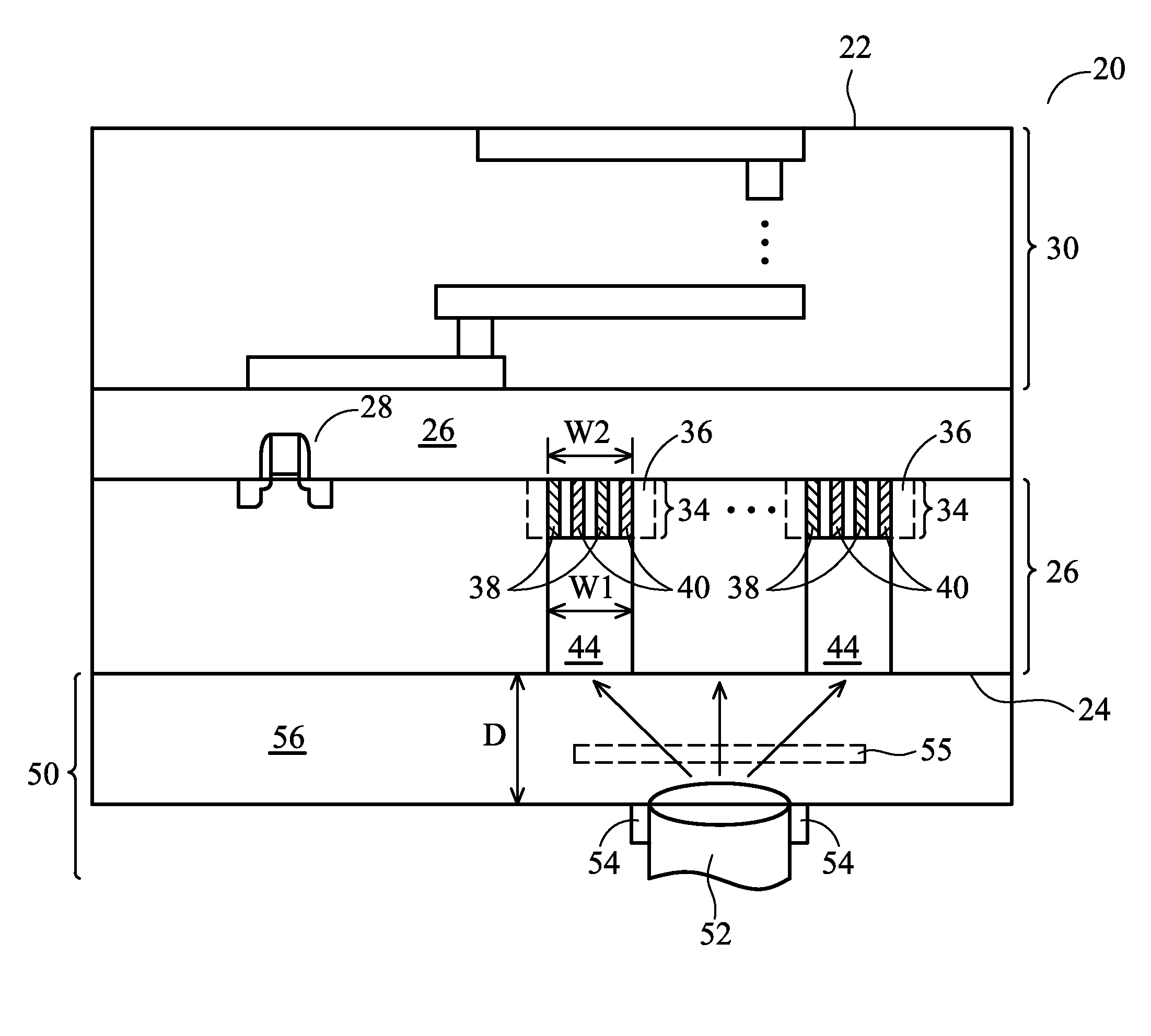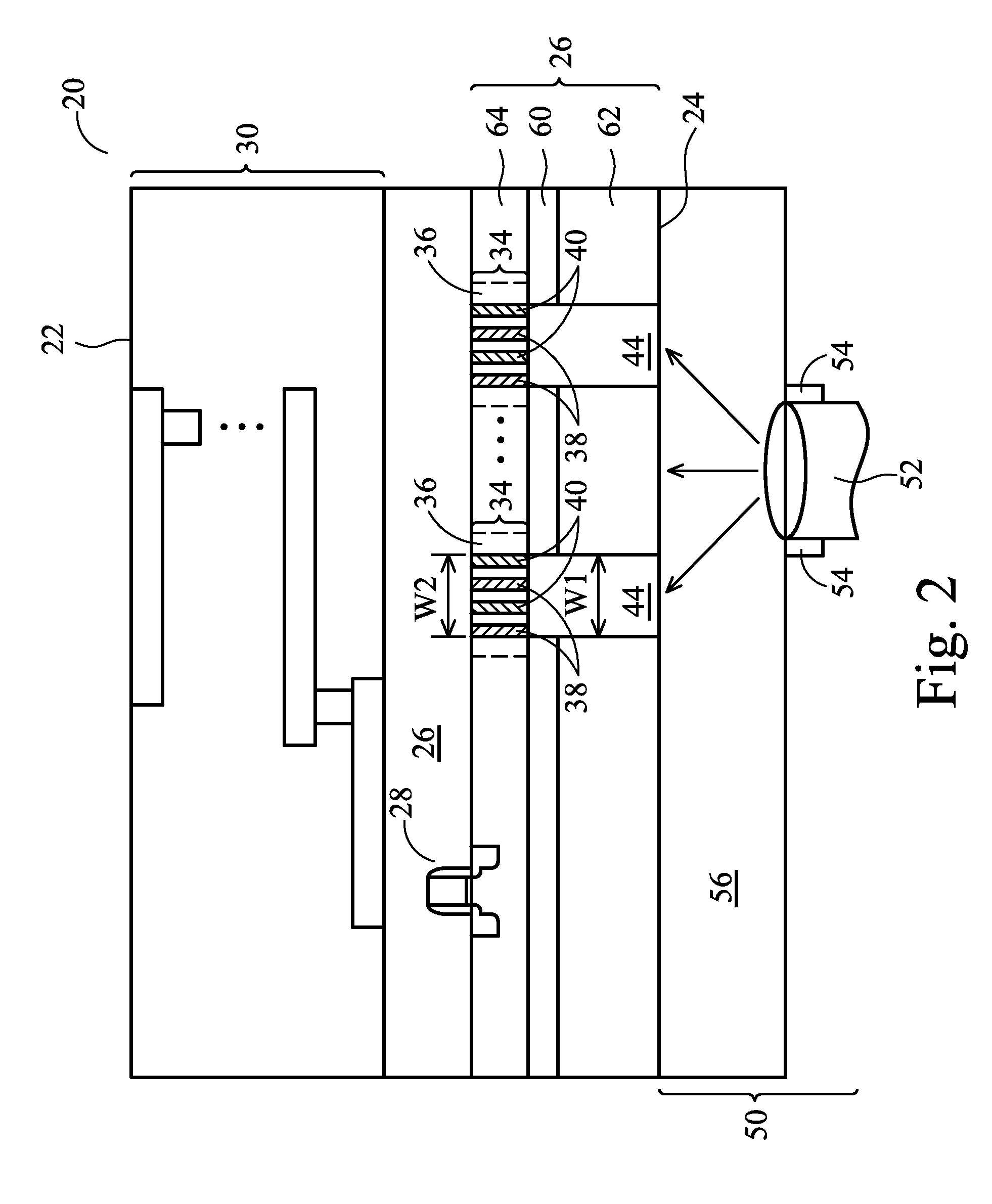Optical clock signal distribution using through-silicon vias
a silicon via and clock signal technology, applied in the field of optical signals, can solve the problems of preventing efficient allocation of optical detectors, affecting the efficiency of optical detection, and consuming more power, so as to reduce the heat generated by clock circuits and reduce the attenuation of ligh
- Summary
- Abstract
- Description
- Claims
- Application Information
AI Technical Summary
Benefits of technology
Problems solved by technology
Method used
Image
Examples
Embodiment Construction
The making and using of the presently preferred embodiments are discussed in detail below. It should be appreciated, however, that the present invention provides many applicable inventive concepts that can be embodied in a wide variety of specific contexts. The specific embodiments discussed are merely illustrative of specific ways to make and use the invention, and do not limit the scope of the invention.
A novel integrated circuit structure for receiving optical clock signals and converting the optical clock signals to electrical clock signals is provided. The variations and the operation of the preferred embodiments are discussed. Throughout the various views and illustrative embodiments of the present invention, like reference numbers are used to designate like elements.
FIG. 1 illustrates a cross-sectional view of an embodiment of the present invention, which includes chip 20. Chip 20 has front surface 22 and back surface 24. Semiconductor substrate 26 is inside chip 20. In an em...
PUM
 Login to View More
Login to View More Abstract
Description
Claims
Application Information
 Login to View More
Login to View More - R&D
- Intellectual Property
- Life Sciences
- Materials
- Tech Scout
- Unparalleled Data Quality
- Higher Quality Content
- 60% Fewer Hallucinations
Browse by: Latest US Patents, China's latest patents, Technical Efficacy Thesaurus, Application Domain, Technology Topic, Popular Technical Reports.
© 2025 PatSnap. All rights reserved.Legal|Privacy policy|Modern Slavery Act Transparency Statement|Sitemap|About US| Contact US: help@patsnap.com



